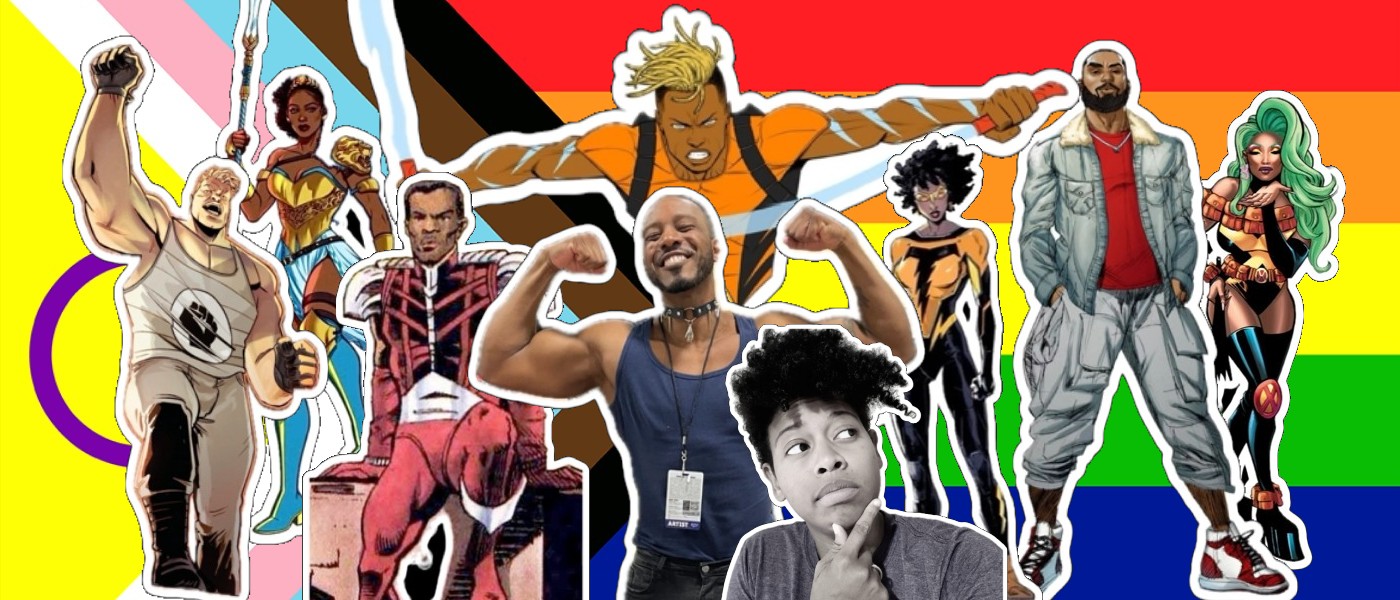A Different Kind of Heroism
As Pride Month 2025 unfolds, we are reminded not just of the vibrant resilience of the LGBTQIA+ community, but also of the need for nuanced representation that speaks to the intersections of race, gender, sexuality, and power. Within this context, Black LGBTQIA+ superheroes stand as powerful icons of resistance, affirmation, and identity formation. Their visibility in comic books and popular media offers more than entertainment—it offers a lifeline, a roadmap, and a mirror to those who have long been marginalized within both the superhero genre and society at large.
Historically, comics have often failed to reflect the diversity of their readership. While recent years have seen strides in racial and queer representation, the intersection of the two remains underexplored and underappreciated. Yet, characters like Prodigy (David Alleyne), Ayo and Aneka, Masquerade, Fade, Josiah Power, Thunder (Anissa Pierce), Jackson Hyde (Aqualad), Genie (Aza Comics), and Stronghold (133art.com) mark important shifts. Their presence, especially during Pride Month, reclaims narrative space and fosters visibility for Black queer readers who rarely see themselves depicted as both powerful and complex.
Historical Context: Invisibility in Double Dimensions
The evolution of representation in superhero comics reflects broader societal struggles with race, gender, and sexuality. For much of the 20th century, mainstream comic books—particularly those from Marvel and DC—largely ignored or marginalized both Black and LGBTQIA+ characters. Those who did appear were often stereotypes, caricatures, or secondary figures lacking meaningful narrative arcs. It wasn’t until the 1960s and 70s that Black superheroes like Black Panther, Luke Cage, and Storm emerged, heralding a slow and often uneven shift toward racial visibility. However, their portrayals were almost always heterosexual and steeped in the expectations of heteronormative masculinity and femininity.
The LGBTQIA+ community experienced a similarly fraught path toward recognition. Queer coding was common but often subtle or subversive, as explicit representation was largely forbidden by the Comics Code Authority. When queer characters did begin to appear more openly in the 1990s and 2000s, they were frequently white, male, and written through a mainstream lens. Black LGBTQIA+ superheroes were virtually nonexistent—or erased.
This erasure reflects what scholars like Adilifu Nama (2011) and Deborah Elizabeth Whaley (2015) refer to as a “double invisibility”—where Blackness and queerness are each underrepresented, but their intersection is almost entirely excluded. It reveals the cultural discomfort with acknowledging that Black people can be queer and that queer people can be Black, with all the richness, struggle, and beauty those identities carry.
Furthermore, early Black superheroes were often cast in assimilationist roles—strong, stoic figures who mirrored white leadership structures, rather than challenged them. Likewise, queer characters were initially included as symbols of tolerance, not revolution. Intersectional representation, which would show characters who are both radical in identity and in political positioning, took much longer to arrive and remains inconsistent.
The result was generations of Black LGBTQIA+ readers who saw themselves reflected neither in the heroes who looked like them, nor in those who shared their gender identities or sexual orientations. This absence has psychological and cultural consequences, contributing to internalized erasure and limiting the ability to imagine oneself as a central figure in narratives of heroism, love, or liberation.
The slow emergence of characters like Masquerade, Fade, Thunder, and Prodigy challenged this status quo by explicitly naming and visualizing queer Black identity within heroic frameworks. Their existence laid the groundwork for newer characters like Genie, Jackson Hyde, and Stronghold—heroes who don’t just appear but who thrive, love, lead, and evolve within complex and affirming story worlds. These breakthroughs signal a shift not just in comics, but in how society views the intersection of Blackness and queerness—as sites of possibility, resistance, and power.
Profiles in Representation: Black LGBTQIA+ Superheroes
Prodigy (David Alleyne) – Marvel Comics

Once part of the New X-Men and Young Avengers, David Alleyne came out as bisexual during the Krakoan era. A brilliant tactician with the ability to absorb knowledge, Prodigy represents intellectual power and emotional vulnerability. His queerness is neither hidden nor sensationalized—it’s woven into his identity and growth, affirming that Black queer youth deserve layered, dignified narratives.
Ayo and Aneka – Marvel’s Black Panther Universe
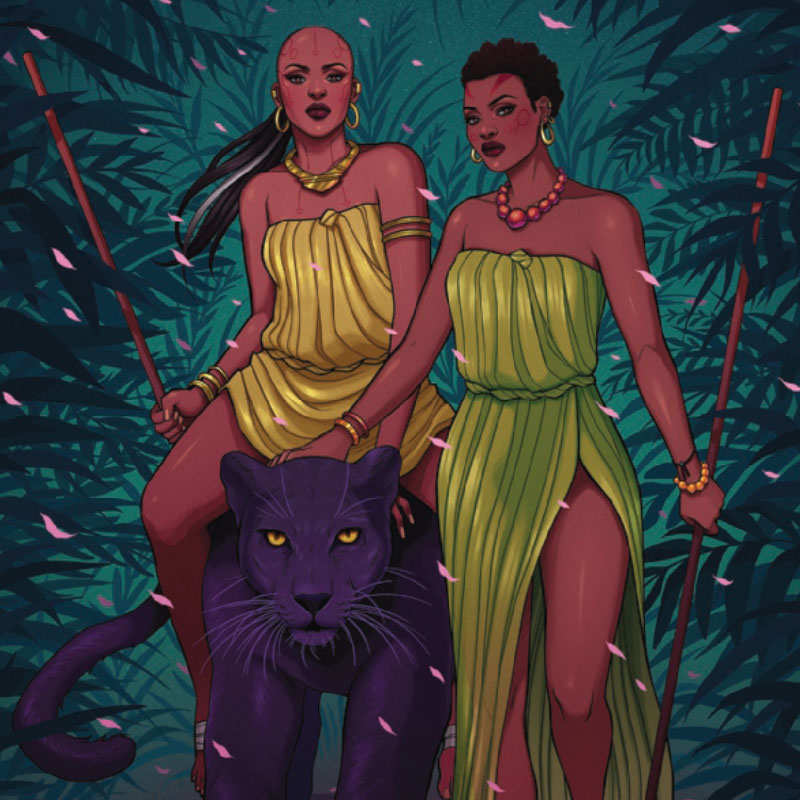
Originally members of the Dora Milaje, Ayo and Aneka became romantic partners and vigilantes fighting against corruption in Wakanda. Their love story, explored in World of Wakanda (2016), redefined how intimacy, nationhood, and rebellion can coexist. As queer African warriors, they disrupt colonial notions of queerness as Western and present Black lesbian love as revolutionary and deeply rooted in cultural identity.
Masquerade and Fade – Milestone Comics
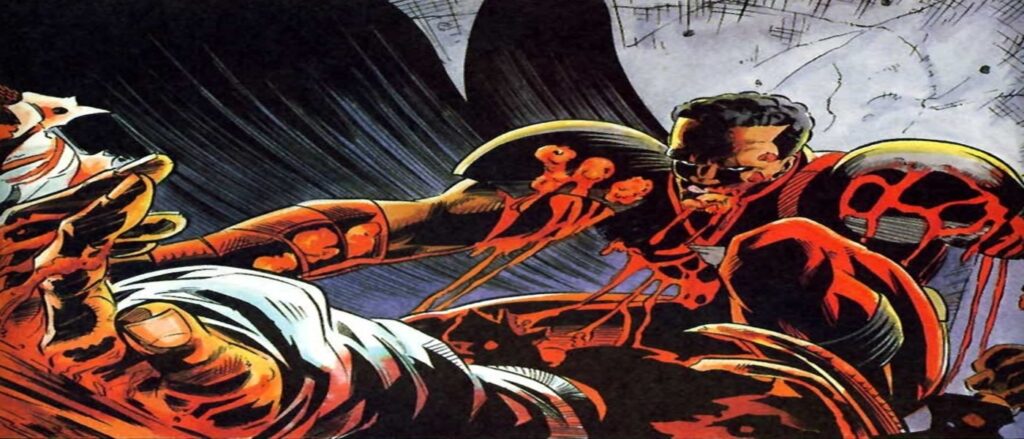
Masquerade, one of the founding members of Blood Syndicate, is a transgender man whose identity was groundbreaking at a time when trans representation was virtually nonexistent in comics. His powers of illusion also act as a metaphor for self-presentation and the complexities of gender identity.

Fade, another Blood Syndicate member, is a closeted gay Black man with time-phase abilities. His quiet struggle with identity adds emotional depth to a character torn between fear and self-acceptance, offering an early example of Black queer narrative in mainstream comics.
Josiah Power – DC Comics
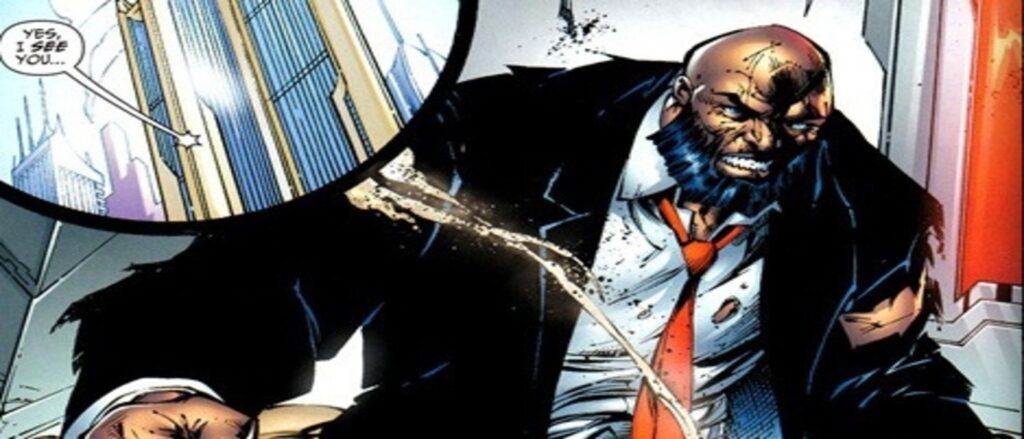
A former high-powered lawyer turned metahuman, Josiah Power leads the team Power Company. As an openly gay Black man with a commanding presence and intellect, Josiah disrupts stereotypes about both lawyers and superheroes. His dignified and assertive character shows that leadership, identity, and queerness are not mutually exclusive.
Thunder (Anissa Pierce) – DC Comics
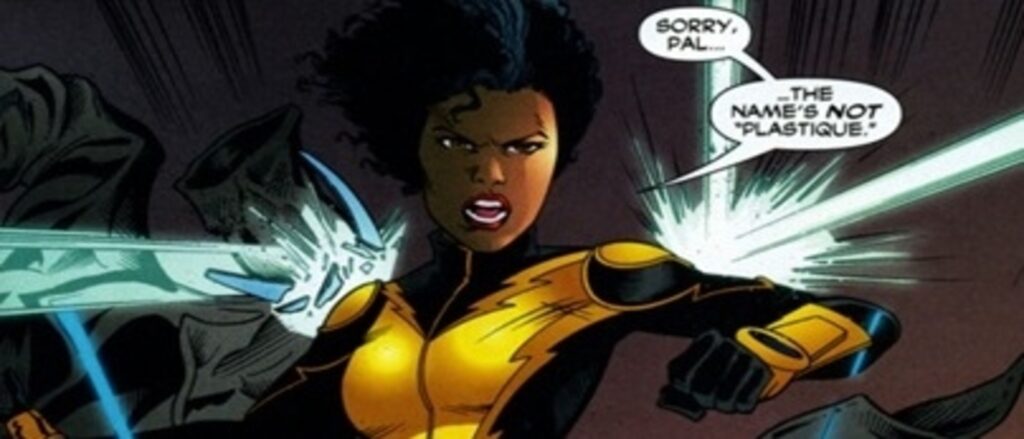
Daughter of Black Lightning, Anissa Pierce is one of the most prominent Black lesbian superheroes in DC’s roster. Her role in The Outsiders and later in the Black Lightning TV series helped normalize queer representation, showing her as both a powerful metahuman and a woman unafraid to love openly.
Jackson Hyde (Aqualad) – DC Comics
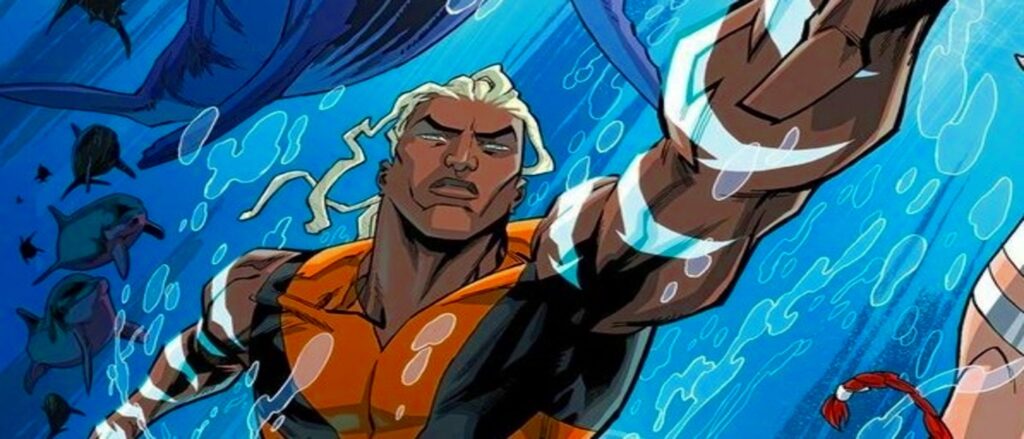
The son of Black Manta, Jackson Hyde was reimagined as a gay Black teenager in the Young Justice animated series and DC Rebirth comics. His identity was gracefully folded into his storyline, portraying him as both emotionally intelligent and physically powerful. Jackson’s growth and visibility speak to the importance of representation for queer youth of color.
Genie – Aza Comics / Aza Entertainment

Created by Jazmin Truesdale, Genie is a prominent figure in the all-female Aza Comics universe. While not always explicitly labeled, Genie’s relationships, presentation, and context within the Aza universe position her as a strong, queer-coded character of color. Genie represents strength, independence, and intersectional feminism in a space designed for empowering women from all backgrounds—including LGBTQIA+ women.
Stronghold – Created by Jason Reeves and Greg Anderson Elysée
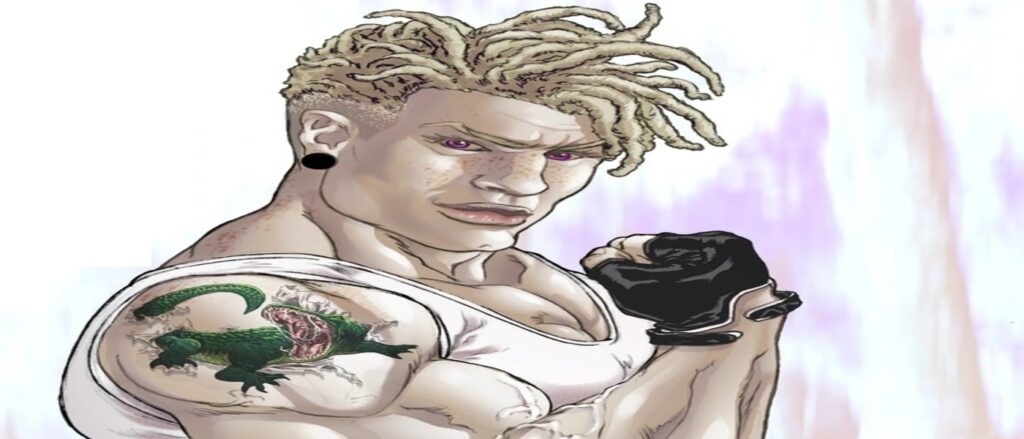
Stronghold, a superhero created by Black indie comics creator Jason Reeves and Greg Anderson Elysée, adds another layer of complexity to Black LGBTQIA+ representation. Elysée and Reeves’s storytelling includes nuanced explorations of identity, cultural legacy, and queer experiences. While Stronghold’s story may not yet be widely known in mainstream spaces, its indie foundation allows for creative freedom and authentic representation that speaks directly to Black LGBTQIA+ readers.
Darkveil – Marvel Comics
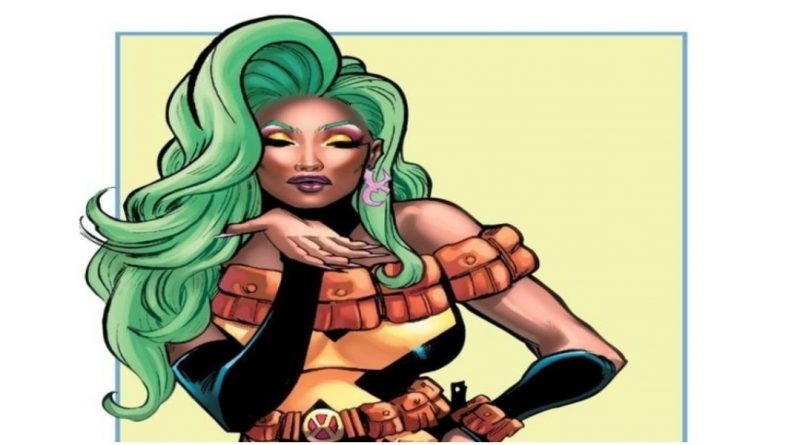
Originally introduced in a drag-inspired tribute to real-world drag legend Dax ExclamationPoint, Darkveil (formerly Shade) is a mutant drag queen who manipulates darkforce energy. Her powers and performance are both aesthetic and tactical, blending camp, confidence, and supernatural ability in ways that celebrate Black queer flamboyance. She unapologetically disrupts the often rigid expectations of gender and presentation in superhero storytelling, offering readers a fierce, feminine figure who embodies theatrical resistance and glamorous strength. As both a performer and a protector, Darkveil emphasizes that queerness is not only valid but also powerful and beautiful.
Vita Ayala – Comic Book Writer
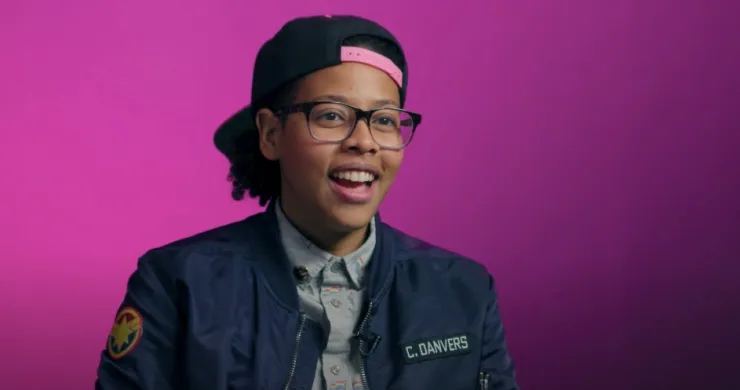
While not a superhero character themselves, Vita Ayala is a crucial figure behind the scenes whose creative vision has shaped some of the most inclusive comic stories of the past decade. An Afro-Puerto Rican, queer, non-binary writer, Ayala has worked on titles like New Mutants, Wonder Woman, The Wilds, and Livewire. Their narratives often prioritize marginalized voices, tackling topics such as trauma, belonging, found family, and identity with emotional authenticity and cultural relevance. Ayala’s work expands the superhero canon to reflect diverse realities and ensures that Black and queer characters are treated with the depth and dignity they deserve.
Greg Anderson Elysée – LGBTQIA+ Comic Author and Creator
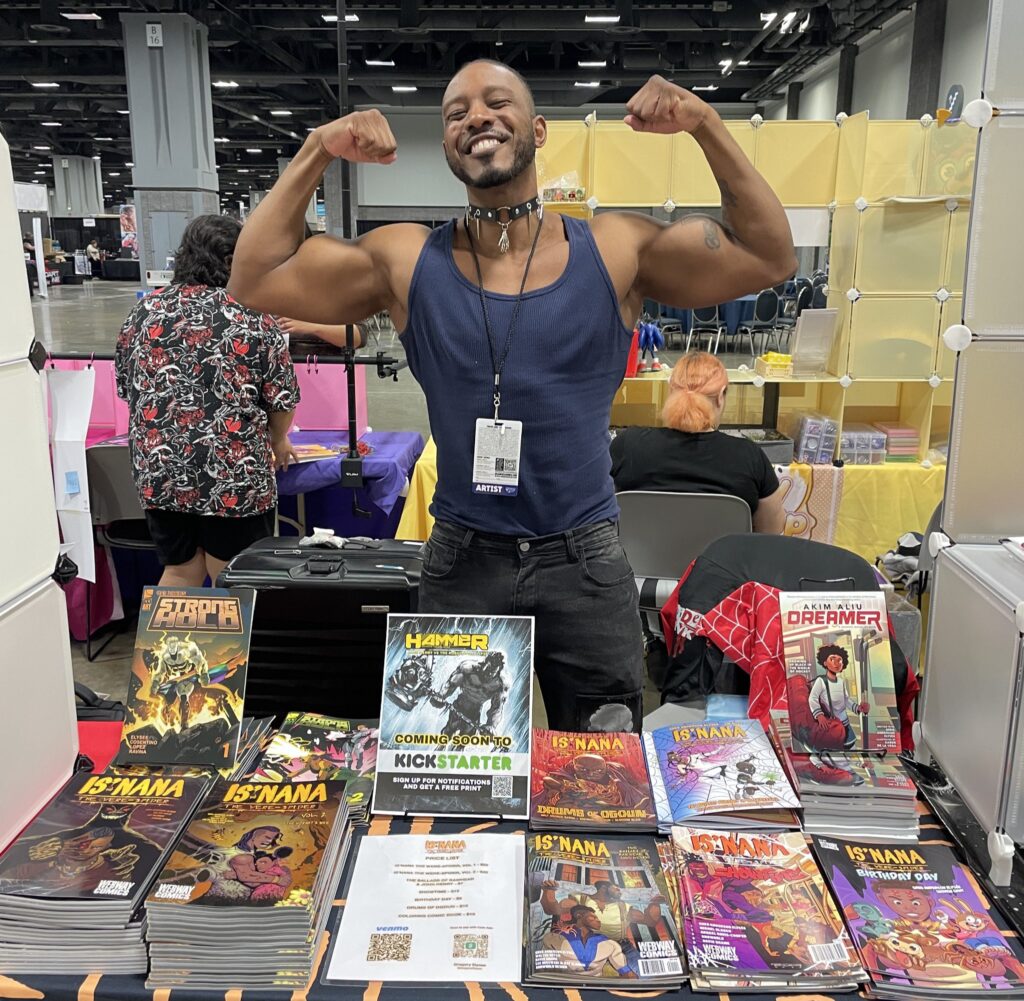
Though not a superhero himself, Greg Anderson Elysée is a critical figure in this ecosystem. His series Is’nana the Were-Spider blends African mythology, queer subtext, and emotional honesty to create a supernatural comic that foregrounds Blackness and queerness without compromise. His presence as a Black queer creator is vital to the development of authentic narratives, and his work encourages future generations of creators to embrace both identity and imagination in their storytelling.
Representation as Resistance: Why These Stories Matter
Representation isn’t just symbolic—it’s political. When Black LGBTQIA+ superheroes take center stage in mainstream and independent comics, they challenge deeply entrenched societal norms about who is allowed to be powerful, visible, and heroic. These characters do not merely exist as tokens; they function as revolutionary counter-narratives in a genre that has historically excluded or marginalized them.
Black queer and trans superheroes represent defiance in the face of historical erasure. They affirm that Blackness and queerness are not mutually exclusive, but instead intersect in ways that are culturally rich, emotionally nuanced, and politically powerful. Characters like Thunder, Prodigy, and Masquerade articulate identities that have often been silenced or stereotyped in media. Their presence helps combat what scholars like Adilifu Nama and Deborah Elizabeth Whaley call the “double invisibility” of being both Black and queer in popular culture.
Moreover, these characters offer crucial validation for readers navigating their own layered identities. Seeing Jackson Hyde grapple with self-acceptance, or Ayo and Aneka fight for justice and love within their own cultural context, can be empowering to queer Black youth who rarely see their full selves reflected on the page. These stories become tools of affirmation and survival.
Importantly, the narratives surrounding these heroes often center themes of community, resistance, love, and transformation. Characters like Stronghold or Genie redefine traditional heroism by resisting not only villains but the systems that silence or marginalize their communities. Their powers are often metaphors for inner strength, their stories reflections of real-world struggles for dignity and equity.
In a time of renewed anti-LGBTQIA+ rhetoric and ongoing systemic racism, amplifying the stories of Black LGBTQIA+ superheroes becomes more than entertainment—it becomes necessary cultural work. These characters are not only aspirational figures but also educational ones, shaping how readers understand justice, resilience, and representation.
Pride Month serves as a reminder that these stories are not just about inclusion but about evolution. They show that representation is not the end goal—it’s the beginning of something far greater: belonging, respect, and radical reimagination.
Intersectionality and the Superhero Genre
The concept of intersectionality, first introduced by Kimberlé Crenshaw (1989), helps illuminate why Black LGBTQIA+ superheroes hold such transformative power. Intersectionality acknowledges that systems of oppression—such as racism, sexism, homophobia, and transphobia—do not operate independently of one another. Black queer superheroes embody this convergence of identities, reflecting both the compounded marginalization and the dynamic resilience of people living at multiple intersections.
Characters like Thunder, who navigates her Blackness, womanhood, and sexuality, or Masquerade, who redefines masculinity and gender expression, offer a deep reservoir of storytelling potential rooted in real-world experiences. These characters challenge the genre’s tendency to flatten identities into simplistic archetypes. Instead, they serve as layered figures who navigate both internal struggles and systemic barriers—mirroring the real-life challenges many readers face.
Importantly, these heroes also challenge the monolithic depictions of Black identity often found in mainstream media. By including Black queer and trans characters with agency, emotional depth, and community ties, creators disrupt not only the white-heteronormative gaze of the superhero genre but also traditional notions of heroism itself. These heroes are not just strong; they are vulnerable, complex, and human.
From a pedagogical perspective, these characters offer vital entry points for classroom dialogue about justice, identity, and the importance of inclusive storytelling. Incorporating comics that feature these characters into educational curricula fosters critical thinking about representation and helps students from all backgrounds see the value of diverse voices. They encourage readers to ask: Who gets to be the hero? Whose stories are we telling, and why?
In 2025, when conversations around diversity, equity, and inclusion are more urgent than ever, these characters help remind us that intersectionality is not just theory—it is lived experience. And in the pages of comic books, that lived experience is finally gaining the heroic platform it deserves.
Current Relevance: Pride Month 2025 and Beyond
As Pride Month 2025 sees parades, panels, and global celebrations, the inclusion of Black LGBTQIA+ heroes in comics becomes more than a checkbox—it becomes a cultural imperative. These characters remind us that freedom and equality must be inclusive or they are neither.
With the growth of fandoms like #BlackComicsMonth and creators actively pushing boundaries, there’s hope that the stories of Black queer superheroes will not just increase in number but deepen in quality. Titles like Immortal X-Men, World of Wakanda, and Nubia: Queen of the Amazons are leading the charge, but there remains a need for more Black queer writers, editors, and illustrators behind the scenes.
The Hero We Need, The Story We Deserve
Black LGBTQIA+ superheroes are more than their powers. They are symbols of layered identity, cultural resistance, and radical imagination. In honoring them during Pride Month, we’re doing more than celebrating fictional characters—we’re affirming real people who see themselves in those pages.
For readers, educators, and creators alike, these characters offer a call to action: to tell richer stories, to demand better representation, and to believe that even in a world full of battles, identity itself can be a superpower.
References
Crenshaw, K. (1989). Demarginalizing the Intersection of Race and Sex. University of Chicago Legal Forum.
hooks, b. (1992). Black Looks: Race and Representation. South End Press.
Howard, D. (2020). Black Comics: Politics of Race and Representation. Bloomsbury Academic.
Nama, A. (2011). Super Black: American Pop Culture and Black Superheroes. University of Texas Press.
Reeves, J. (2018–2025). 1944 Comics and Independent LGBTQIA+ Titles.
Truesdale, J. (2015–2025). Aza Comics Universe. Aza Entertainment.
Elysée, G. A. (2016–2025). Is’nana the Were-Spider series.
World of Black Heroes. (2018). LGBT Black Superheroes. https://worldofblackheroes.com/2018/06/30/lgbt-black-superheroes/
Marvel Comics. (2020–2025). X-Men, World of Wakanda, Immortal X-Men.
DC Comics. (2021–2024). Nubia & the Amazons, Black Lightning, DC Pride Anthologies.
Milestone Media & DC Comics. (1993–2025). Blood Syndicate, The Outsiders, Young Justice, Power Company.

